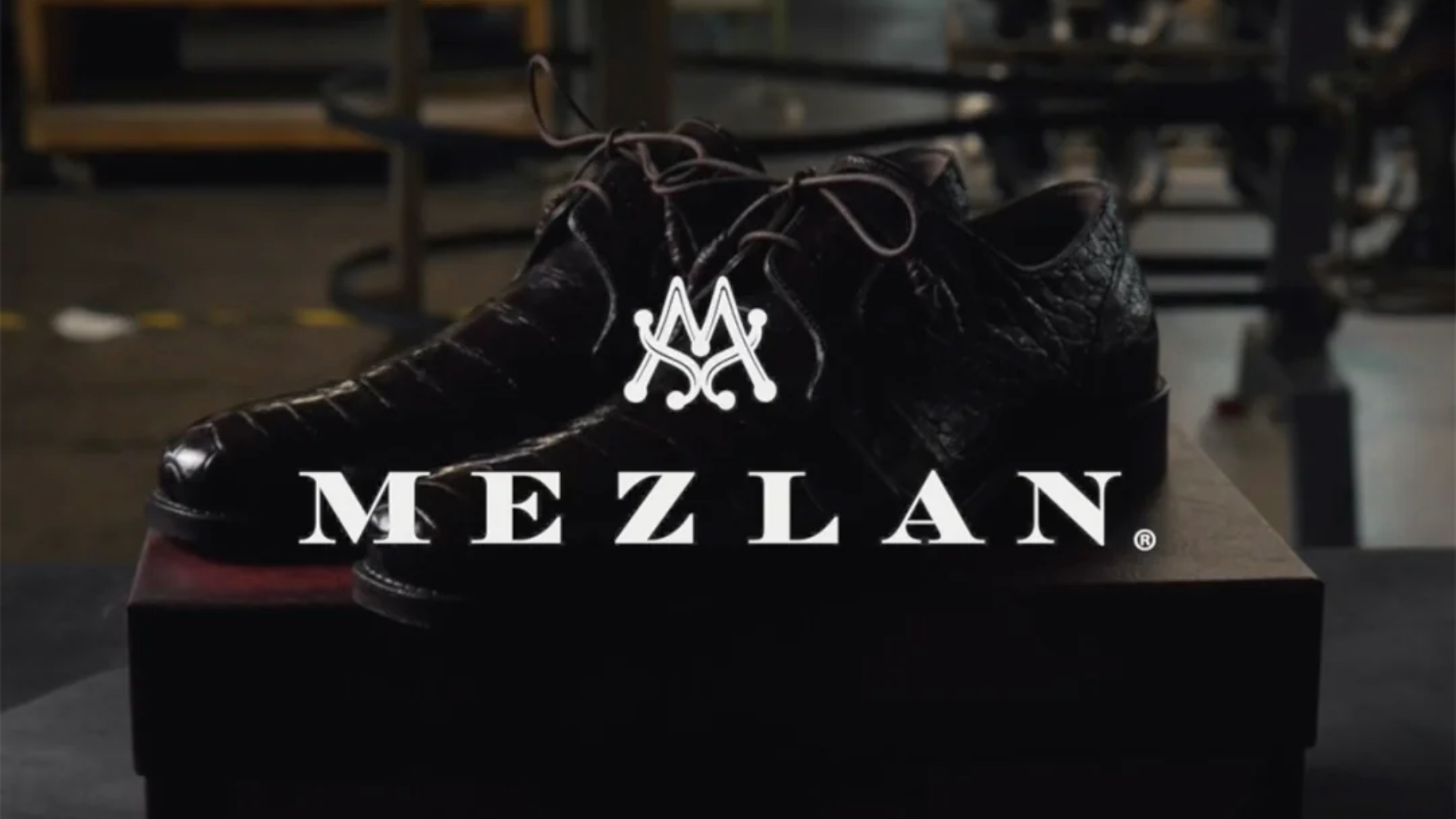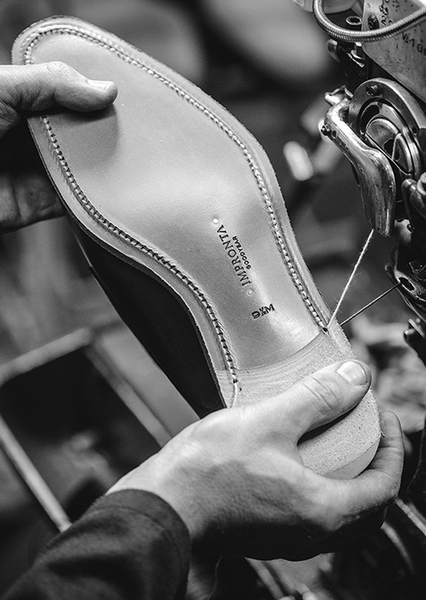Understanding Shoe Construction: The Goodyear Welt


Shoemaking is an artform, but in some parts of the world, it's becoming a lost one. Thanks to cheap, mass-produced shoes literally held together with nothing but rubber cement, many men have become accustomed to inferior shoes. But there is a better way. Since 1869, when Charles Goodyear Jr. invented the first Goodyear welt machine, the Goodyear Welt has been the gold standard in shoe construction. Today, there are three primary methods for shoe construction: cementing, the Blake welt, and the Goodyear welt. Yet after 150 years, shoemakers still consider the Goodyear welt to be the finest method of shoe construction known to man.
What Is the Goodyear Welt?

Before you can understand the nuances of Goodyear-welted shoes, it's important to understand the components of men's designer leather shoes:
- The Upper: the visible piece of leather or suede that makes up the upper half of the shoe
- The Insole: this is the inner sole that comes into contact with the foot
- The Outsole: the bottom sole that touches the ground
- Welts: in the best mens designer leather shoes, this piece of leather is sewn along the perimeter of the outsole
- The Last: during the construction process, the upper and insole are wrapped around a mold of a foot, called a last, which helps give the shoe its shape

In most shoes, the upper is folded between the insole and outsole, then all three layers are sewn together. However, in the Goodyear welt, an extra piece of leather is used for a more secure shoe construction.
Here's how the Goodyear welt works:
The upper is still folded between the insole and the outsole, but a leather welt is also placed atop the edge of the bottom outsole. Additionally, on the bottom side of the insole, a vertical rib runs perpendicular along the outside of the sole. When the upper is placed between the soles, it's placed against this rib and on top of the welt. Then, a stitch is sewn through the welt, through the upper, the ribbed insole, and back through the welt. 
However, there's an additional step that gives Goodyear welt shoes their distinctive look. On the outside of the shoe, a final stitch passes through the bottom sole and the welt. This final stitch is visible running the length of the shoe, which makes these men's designer leather shoes easy to spot in the wild.
What Are the Pros and Cons of the Goodyear Welt Shoe Construction?
There's only one disadvantage to the Goodyear welt: excellence costs more. While these shoes may be more expensive, they also last far longer and are much easier to resole. There are many other benefits to these shoes, which is why they are favored by discerning shoppers. Not only do they last longer, but the extra stitch also makes these shoes far more resistant to water. While the welt helps keep out water, it also allows in more air, making these shoes breathable and cool in the heat and warm and dry during the winter. And because the Goodyear welt relies on a lockstitching method, the stitch will hold even if a portion of it tears or comes undone. And for men willing to invest in long-lasting artisan leather shoes, there are even more benefits to Goodyear welts.Tubular and Moccasin Shoe Construction
While the world's best leather shoe designers have been crafting Goodyear welted shoes for more than a century, the moccasin construction method dates back far longer than that (at least 5,500 years, in fact). Moccasin-style shoes are usually made with softer leathers, and these shoes are perfect for more casual styles. Modern Italian loafers are actually very close cousins of moccasins. In the Goodyear or Blake welt, the edges of the leather upper are sewn to the bottom sole of the shoe, forming an upside down U. In the classic moccasin construction, this is reversed. A large, single piece of leather forms both the sides and insole of the shoe. The edges of this leather upper are folded upwards in a tubular construction. An additional piece of leather forms the topmost layer of the shoe and the tongue. In recent years, the moccasin construction has evolved into the tubular shoe construction (also known as the Bologna construction), a popular choice for modern running shoes. While moccasins use an additional piece of leather to bridge the ends of the U-shaped upper, in tubular construction the edges of the upper are stitched together to form a tube shape.

The Best High End Men's Shoes Are Handmade by Artisans
The number of artisan shoemakers who still know how to construct Goodyear-welted shoes is dwindling in the 21st century. At the Mezlan factory in Almansa, Spain, our designer leather shoes for men are still hand-sewn by uniquely skilled local artisans. The leather uppers are still stained by hand, and this attention to detail -- so rare in the age of mass-produced, cemented shoes -- makes all the difference. This end result is a shoe that can easily last a lifetime (with the proper care), but also results in a more comfortable shoe. In the Mezlan Spanish factory, an extra layer of cork is hand-applied to the bottom of the inner-sole for extra cushioning. Over thousands of steps, the wearer will create a unique footprint that lets the sole mold to the unique shape of their foot. It might be cheaper and less labor-intensive to make shoes entirely with machines or rubber cement, but technology is no replacement for quality. While most men haven't been taught the difference between regular and high end shoes, no one wants to look cheap. There's a reason some shoemakers have begun to apply false stitching along the sole to mimic the appearance of the Goodyear welt. For 150 years, the finest shoes in the world have been made with leather and Goodyear welts, and there's no reason to think that will change in the next 150 years.







Leave a comment